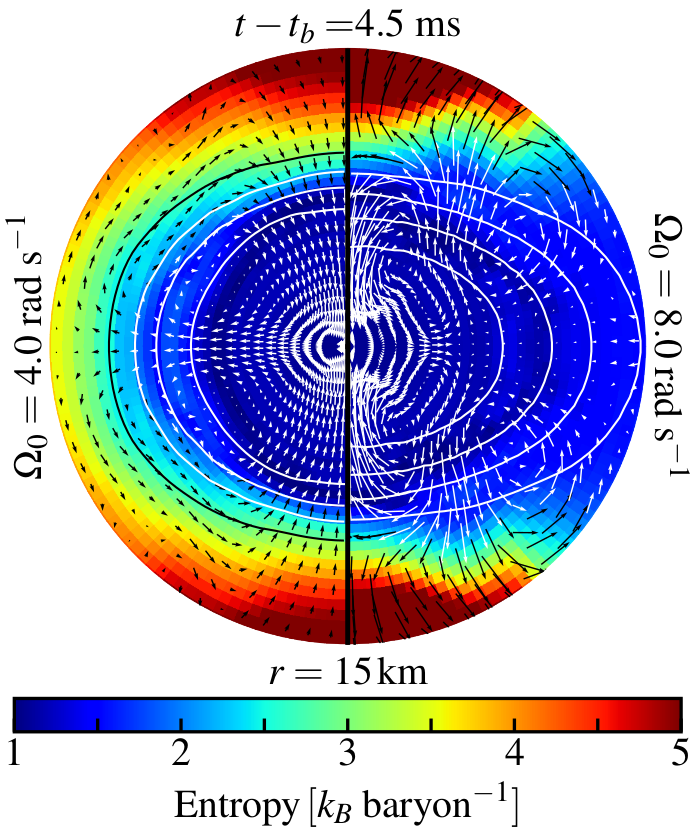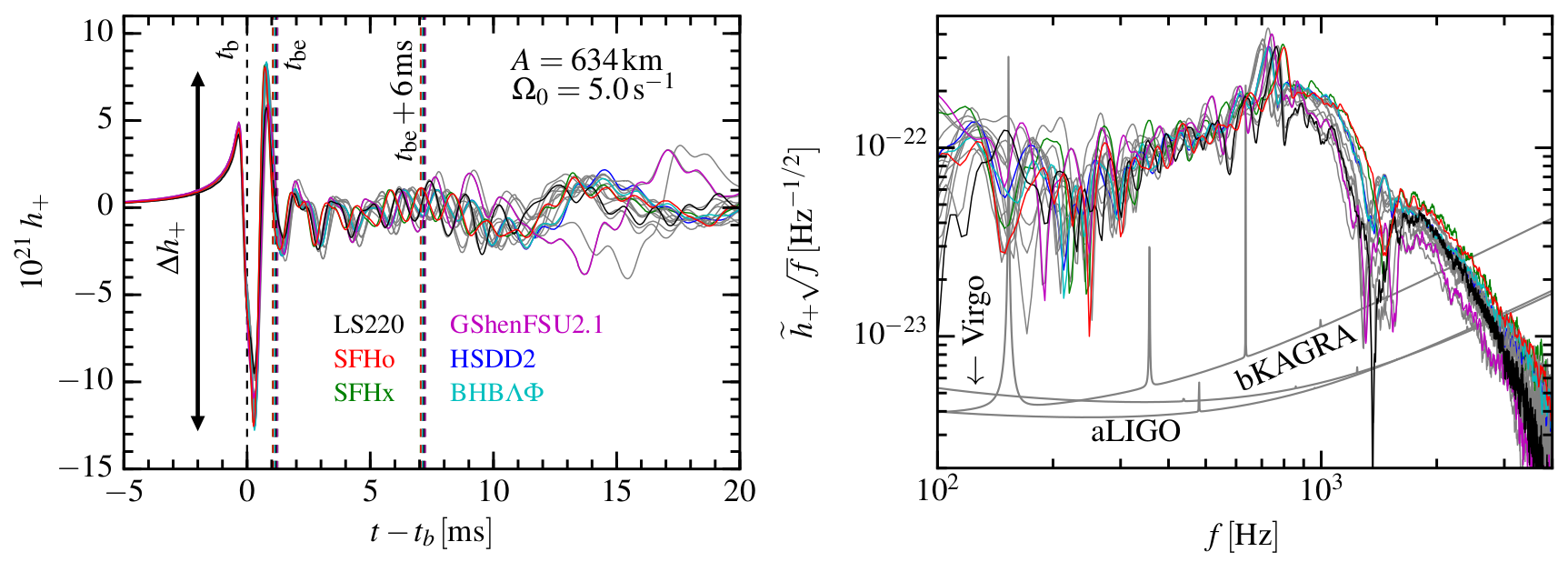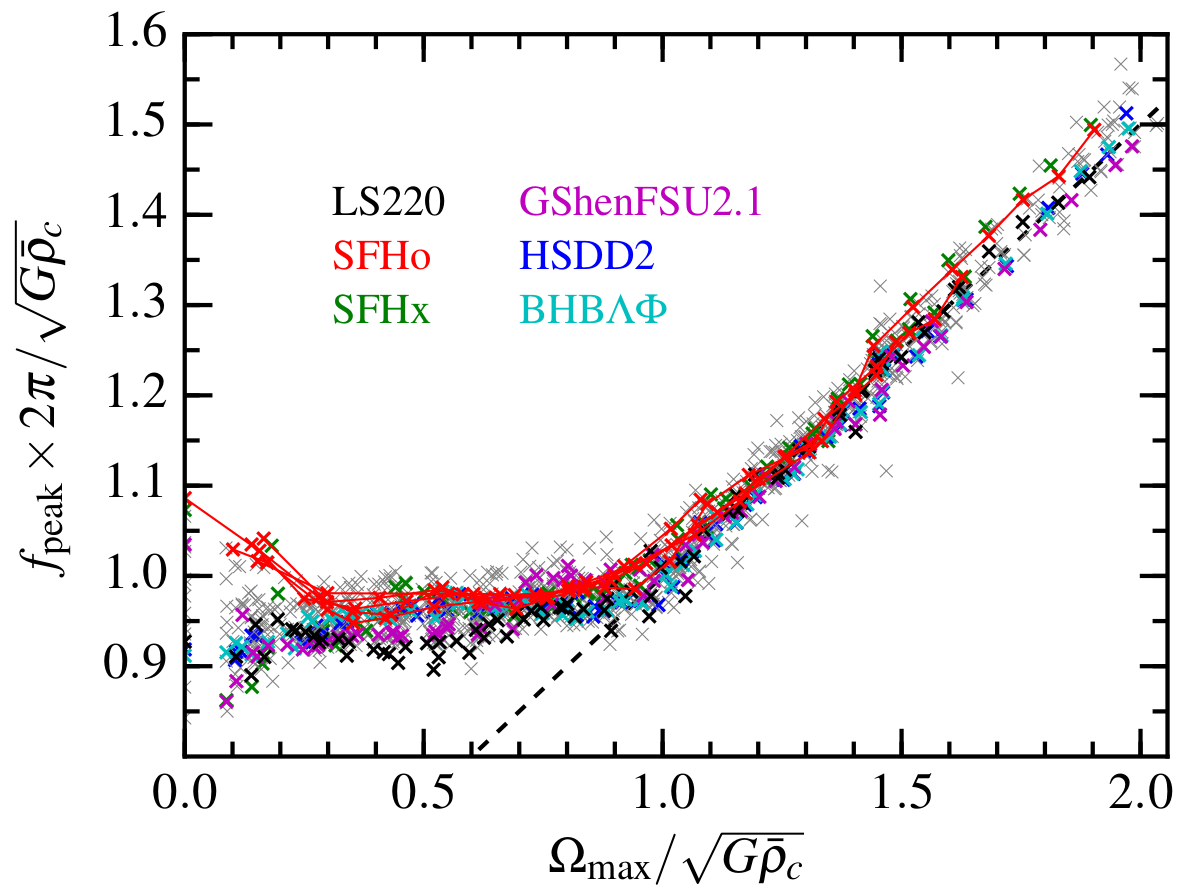Sherwood Richers (California Institute of Technology)
Christian Ott (California Institute of Technology)
Ernazar Abdikamalov (Nazarbayev University)
Evan O'Connor (North Carolina State University)
Chris Sullivan (Michigan State University)
Abstract
Gravitational waves (GWs) generated by the collapse, bounce, and early post-bounce phases of core-collapse supernovae vary depending on the details of a yet poorly constrained nuclear equation of state (EOS). To examine the effects different EOS have on the GWs we run 1764 two-dimensional core-collapse simulations that cover a parameter space of 98 different rotation profiles and 18 different EOS. We show that the effect of the EOS on post-bounce oscillations is parameterized entirely by the dynamical time of the protoneutron star at all rotation rates. We also show that all simulations follow a universal curve in peak frequency vs maximum rotation rate, and suggest that this relationship is caused by inertial effects at high rotation rates. We also run an additional 60 2D simulations with detailed electron capture rates during collapse, and find that GW bounce amplitudes are shifted by 25% and oscillation frequencies are modified by ∼ 100 Hz. We find that it is unlikely that observations of GWs from up to several milliseconds after bounce in a core-collapse supernova can elucidate the nature of the nuclear EOS, and that a consistent and detailed collapse-phase deleptonization treatment is required for robust signal predictions.



Provided Data and Scripts
We provide gravitational waveforms, Ye(rho) profiles, and reduced data from our simulations hosted by zenodo.org at the following URL: https://zenodo.org/record/201145. The data are citable with . They are licensed under the Creative Commons Attribution 4.0 license. When using the data, please also cite our paper.
The scripts used for data analysis are provided here.
